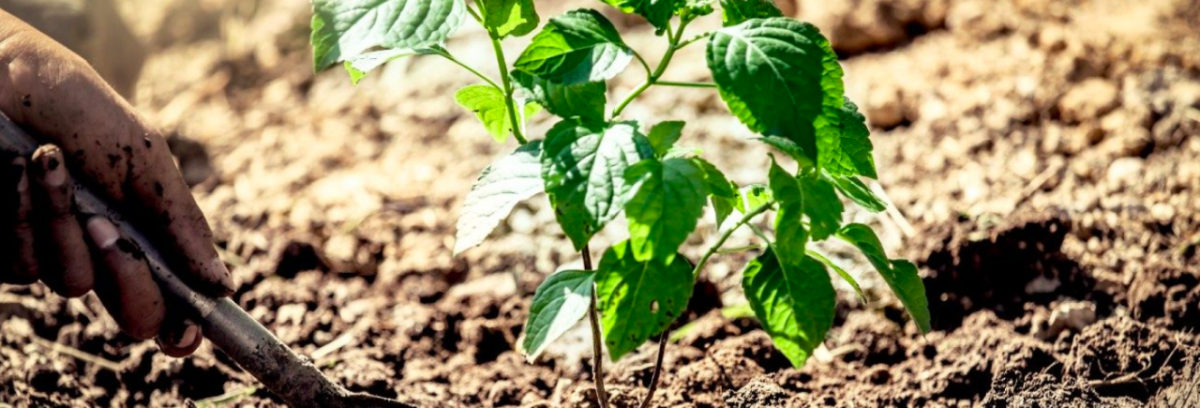Putting Down Roots: Businesses Act on Reforestation

Each year, the Earth Day Network calls on people around the world to act for the environment. For Earth Day 2020—the 50th anniversary of Earth Day, the nonprofit’s theme is climate action.
Technology plays an increasingly important role in climate action, especially as this year’s Earth Day movement goes digital. However, one of the most effective innovations to address climate change already exists: the almighty tree.
“Forests are one of the most powerful tools we have to combat climate change,” according to the Earth Day Network.
Trees are nature’s air filters, and reforestation is one way to complement emissions reduction efforts to help reverse climate change. But it could take billions to trillions of strategically planted, mature trees to significantly impact greenhouse gas levels.
Trees help cool the planet by sucking in and storing harmful greenhouse gases, like carbon dioxide, into their trunks, branches and leaves, releasing oxygen back into the atmosphere.
ONE TREE PLANTED
That’s why organizations like One Tree Planted exist. They work to make tree planting simple, efficient and widespread to accelerate reforestation efforts.
As Canopy Director, Diana Chaplin oversees communications and marketing activities for One Tree Planted. Below, she explains how their global network plants millions of trees with the help of businesses and technologies.
Why are more and more businesses helping plant trees?Chaplin: There’s a lot of benefits that effect their bottom line. Studies show that employees are more loyal and engaged when there is a social and environmental mission in the organization. Customers are more loyal. Plus, you’re just doing the right thing.
Businesses have a lot of power and influence when it comes to creating a better and more sustainable planet. They have the resources. They have the will. They want to make a positive impact, but they may not know quite how to go about it.
We make it as simple as $1 plants one tree. Businesses really like this approach, because it’s impact-driven and measurable.
We’re also very nimble, because we operate like a startup. With a business that’s passionate and motivated to make a difference, we can get the trees in the ground within a few months, depending on the timing and the season.
When we join forces, we do a lot of good together.
In 2019, your organization planted 4 million trees. How do you plant so many trees in a year, from California to Australia?Chaplin: Our team is based in Canada and the U.S. However, we plant trees through a huge network of on-the-ground project partners. We work with everyone from local nonprofit and non-governmental organizations to watershed organizations and city and state parks and recreation agencies.
A lot of work goes into planting trees: fundraising, vetting proposals, preparing sites, growing saplings, planting trees and maintenance. Does technology help you make it any easier?Underground, trees are completely interconnected … Some studies show that when one of these ‘hub’ trees dies, other trees around it continue sending resources to keep the root or stump alive so it continues being a pathway of information and resources within the forest.
DIANA CHAPLIN, CANOPY DIRECTOR, ONE TREE PLANTED
Chaplin: Software is absolutely critical in helping us grow, from maintaining a website and finding a customer relationship management solution to managing team tasks and scaling our projects and operations.
There’s a lot of data that needs to be managed, and we need to do that efficiently, from money coming in and out, to various projects and business partners. We’re also looking at how can we use technology to manage what we’re doing on the ground.
What emerging technologies are on your radar?Chaplin: We’re experimenting with Google’s satellite mapping tool to zoom in on a map, create map markers and add notes that we can share with others. We work closely with the World Resources Institute, as well, which manages the Global Forest Watch tool. They have a lot of data on forest changes via satellite mapping.
We are also talking to some drone companies experimenting in restoration. One company, for example, is exploring shooting seeds to areas ravaged by forest fires so the right kinds of plants could come back quicker.
How are you continuing to plant trees amidst the current crisis?The good news is there if you're looking for it, even for the environment. There's certainly destruction, but there's also creation, innovation and restoration.
DIANA CHAPLIN, CANOPY DIRECTOR, ONE TREE PLANTED
Chaplin: It depends on the location. In some parts of the U.S., for example, forestry is considered essential. In other areas, new safety regulations are being worked out and implemented. So, we’re connecting with our partners to figure it out what we can do, how the trees are doing and what the plan is for next season.
As a nonprofit organization, we’re taking a hit. However, we see quite a lot of businesses are looking for something positive right now. They want to celebrate Earth Day. They’re as committed as ever to the mission of sustainability.
And there’s something to be said about the way that people have responded to this crisis: complying with new guidelines, being careful, wearing masks. All of that is ultimately for the greater good. In terms of global communities coming together for a common goal, there’s a lot that we can apply to the climate crisis.
How do you stay positive and focus on the future?
Chaplin: Positivity is just woven into our ethos.
Sometimes it’s tough. The news can be really disheartening, like what happened in Australia and the Amazon.
We can’t undo what happened, but we have to do everything we can to prevent it from happening again and to make things better.
What’s your advice for businesses just getting started with tree planting and other sustainability initiatives?Chaplin: Take that next step forward, whether it’s joining our reforestation project or simply analyzing your business:
- How are you emitting carbon?
- Are there wasteful practices within the organization?
- How can employees be better engaged or leveraged in your efforts?
- Is your building energy-efficient?
There are a million ways that any business can get started, but just start with one step. See where that takes you.

